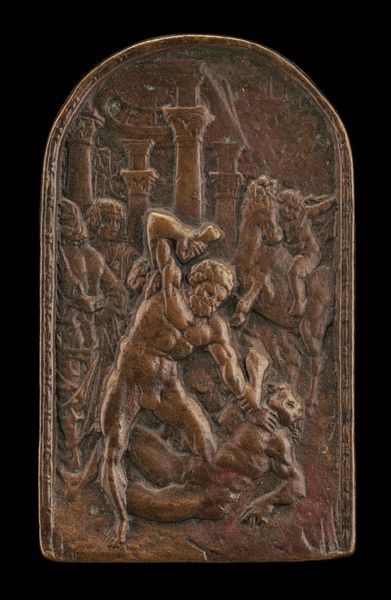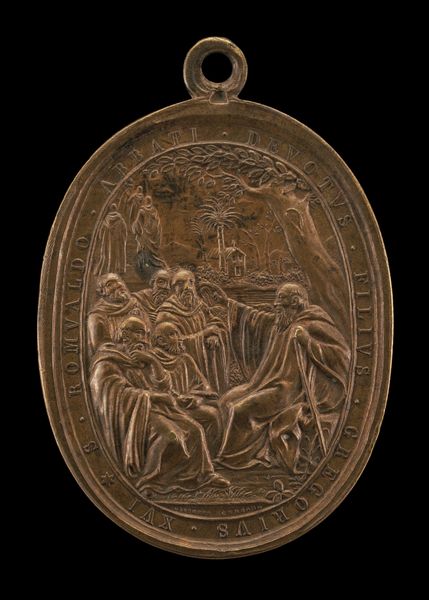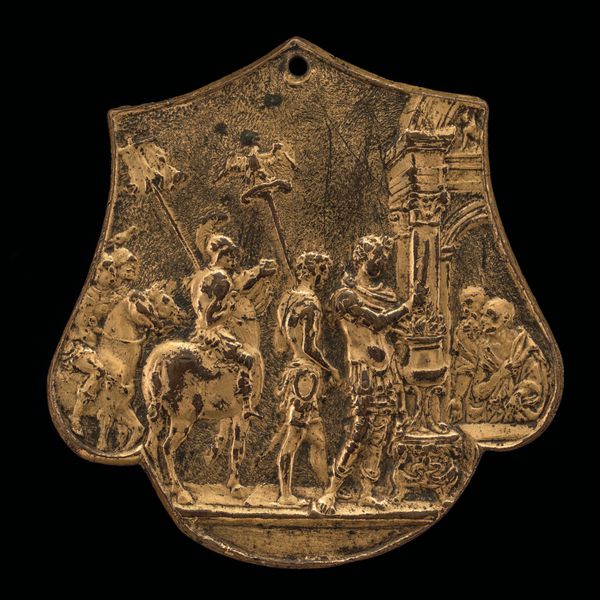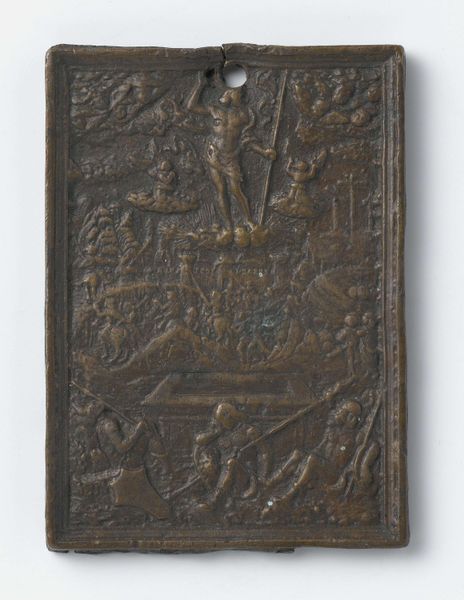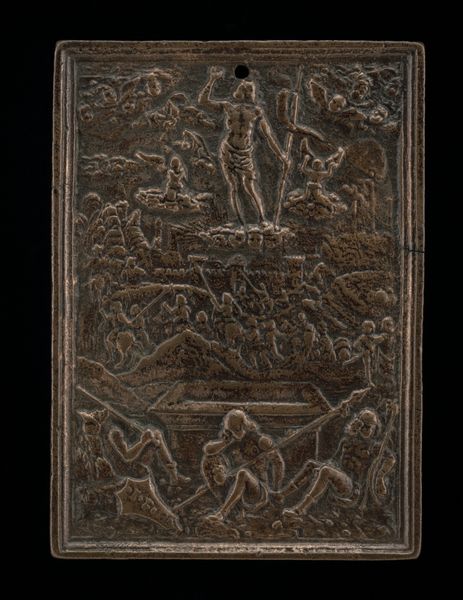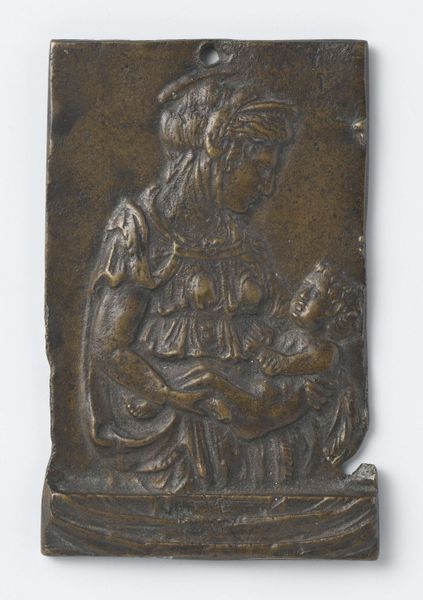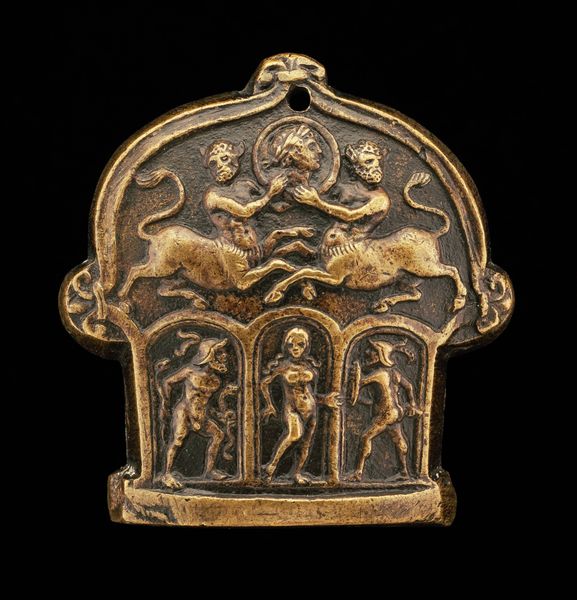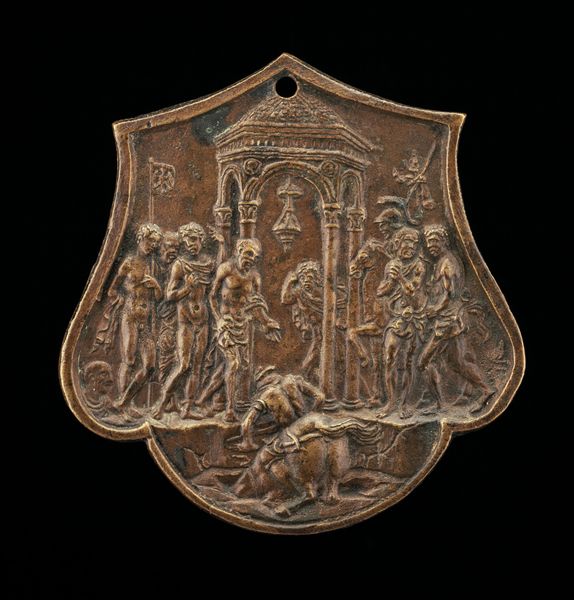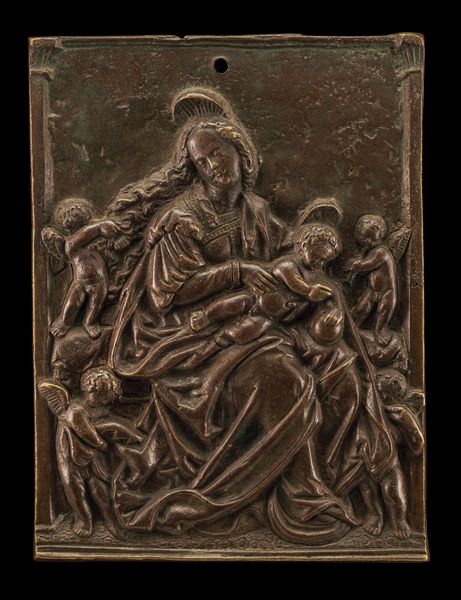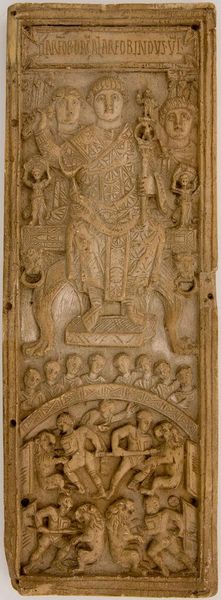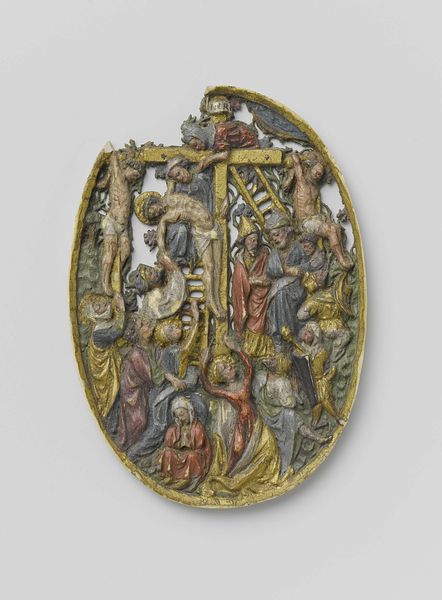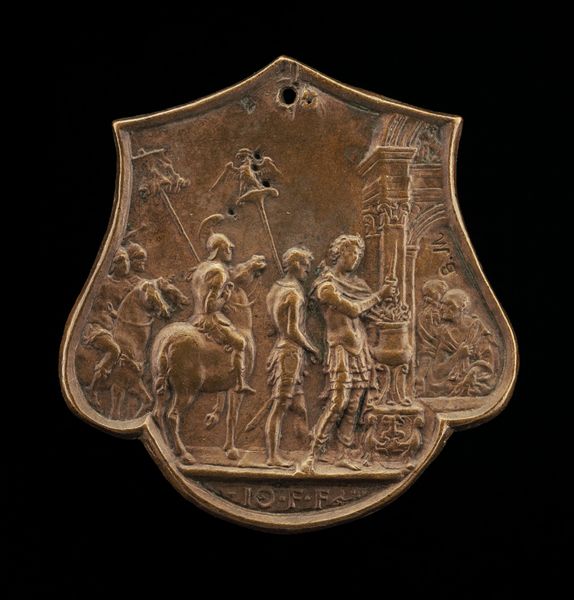
relief, bronze, sculpture
#
narrative-art
#
sculpture
#
relief
#
bronze
#
figuration
#
sculpture
#
history-painting
#
italian-renaissance
Dimensions: overall (arched top): 6.6 x 5.2 cm (2 5/8 x 2 1/16 in.) gross weight: 79 gr
Copyright: National Gallery of Art: CC0 1.0
Curator: Here we have a small, intricate bronze relief, "The Nativity," dating from around the 16th century, by an anonymous artist. The scene is classic, filled with familiar figures, rendered with exquisite detail in this small format. Editor: The first thing that strikes me is its aged bronze patina, which gives it an antique feel. It's so detailed and compact that I almost need to use a magnifying glass to appreciate the expressions on the figures’ faces! There is an aura of serenity, despite the bustle of figures packed into the scene. Curator: Right, these kinds of reliefs were likely commissioned for private devotion, small enough to be held or easily transported. What I find interesting is how this work, though religious, exists within a flourishing art market of the time. Bronze casting itself was a signifier of artistic sophistication and economic status. Editor: Absolutely! The inscription itself – "Nativitas Domini" – the birth of the Lord – is iconic. But the anonymous creator adds their individual style with the subtle arrangement of light and shadow within the composition. Notice how the Holy Family is spotlit, surrounded by supportive, darker figures, almost like players on a stage. Curator: Indeed. This interplay reinforces the central role of the Nativity, highlighting a visual hierarchy, which directly correlates with the Church’s socio-political role at the time. Editor: And let's not forget the angels hovering above, the ox and the ass symbolizing the prophecy from the Book of Isaiah coming true. Each element is a well-worn symbol imbued with generations of belief, meticulously included here to spark religious reflection. Curator: Right, in studying this piece, it's compelling to observe how devotional practice found a nexus within artistic patronage and the wider, shifting cultural values of Renaissance Europe. It shows art objects held significant public and private roles. Editor: For me, I am constantly captivated by the way certain symbols have held consistent meanings across centuries. Examining "The Nativity" reminds us that narratives persist. It remains deeply connected to cultural memory and the enduring power of visual representation.
Comments
No comments
Be the first to comment and join the conversation on the ultimate creative platform.
